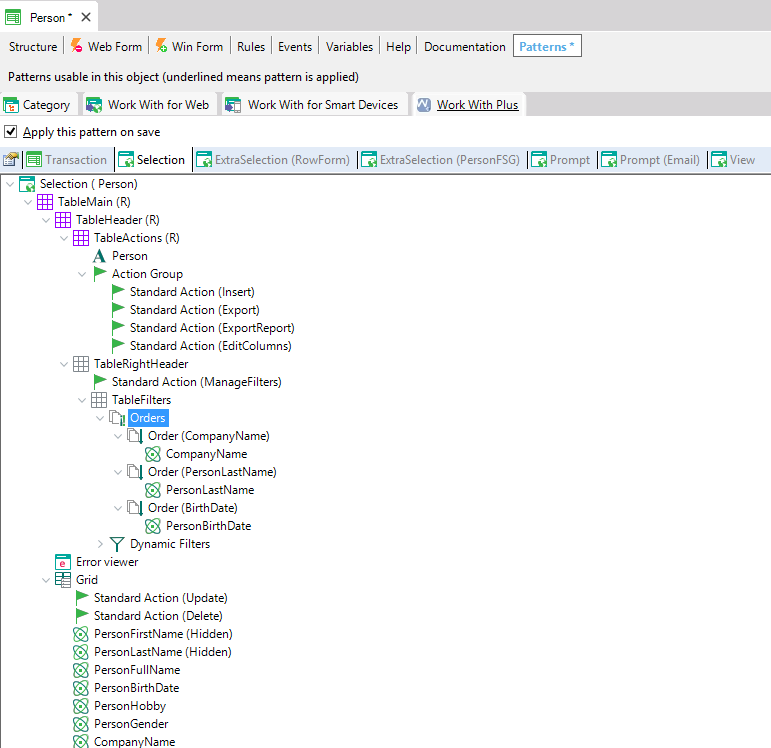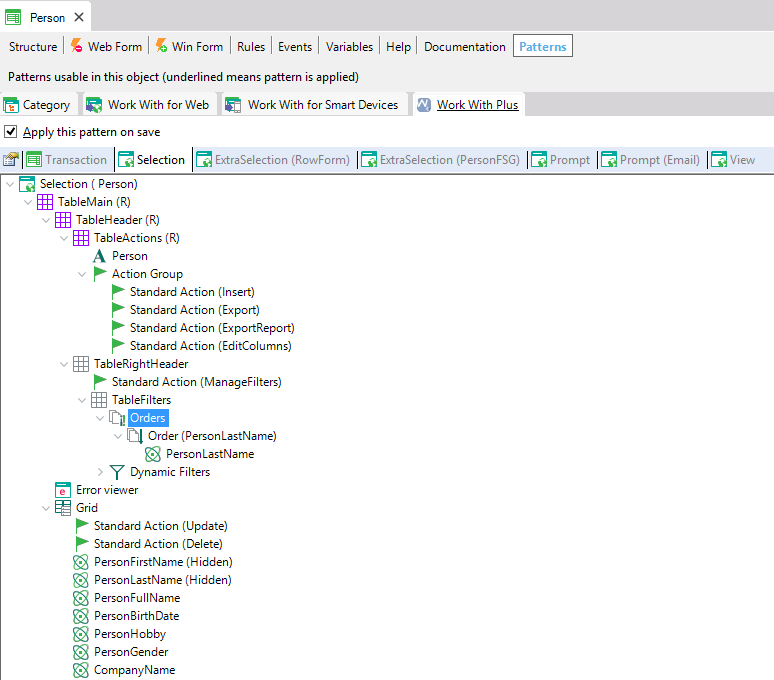
The purpose of Orders node is to put together the orders that will be possible to arrange the grid's records in relation to its attributes. Another way of adding the possibility to sort grid's records is by Title Sorting (Server Side) , which is complementary to Orders and can use for a column title some order created as a child of Orders.
If this node has only one Order Node child, the grid will be ordered based on that condition when the page loads. If 'Title Sorting' is enabled, the grid may support another ways of sorting it, by other attribues. But if 'Title Sorting' is not enabled, or does not contain any column activated for sorting, it will always be ordered by that order.
If there are many Order nodes, an 'Orders' variable will be present on screen (on the layout set by Orders node), which will allow user to select at runtime on which order to show records. This control is optional, as these orders can be associated to a column of the grid (Grid Attribute or Grid Variable), and you can choose to have the combo box of Orders visible or not in screen.
In the example above we have two Orders node, named 'CompanyName' and the other 'PersonLastName'.
Orders node has the following properties:
Specifies if the combo box of Orders are visible in the screen or not.
Combobox's theme class. If this field has an empty value the theme class that will be assigned to the attribute will be taken from WorkWithPlusConfiguration > Theme node > properties Attribute, ReadOnlyAttribute and ReadOnlyBlobAttribute.
If you want to read information about the Location in father table properties, follow this link: Location in father table
To ilustrate what we described above, we will add another Order Node as child of Orders:

Then we run the application and see the results:

We can appreciate that the variable 'Ordered By' has been added so that user can choose which order to apply for the grid's records. If we remove two of those Order Node childs in instance (CompanyName and PersonBirthDate for example):

The variable will not be visible any more because there is only one way to Order the records (by PersonLastName), as we can see below:

We can visualize an example below of an object which contains multiple Orders and TitleSorting enabled:

|